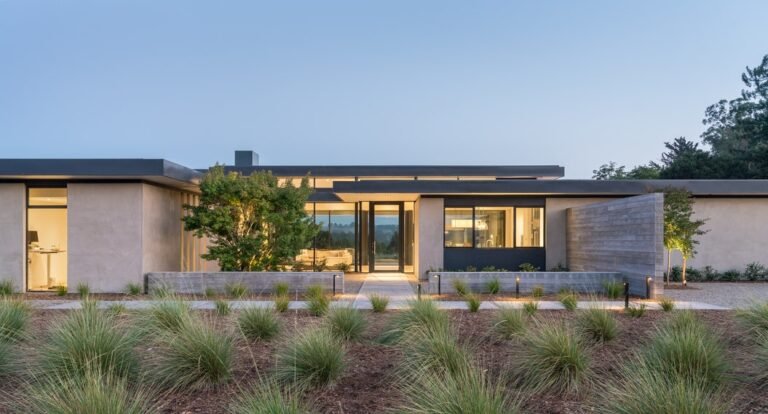homo faber: ceramicist bouke de vries constructs ‘the beauty of destruction’
Deconstructing beauty
Dutch ceramicist Bouke De Vries told Designboom that he looked at perfection versus imperfection, beauty in damage, and the place of ceramics in world history. By inquiring about the depth of flaws, he restores ceramics by breaking them into pieces and cramming the shards into a transparent urn. He intends not to fill the gaps in the vase but gifts the new home of the broken ceramics with passages to let the viewers scrutinize the century-old paintings that dot the materials. The title he has bestowed on his series of vases – Memory Vessel – embodies the wistful history of the fragments, filling the once hollow chamber with the souvenirs of the past for the present to rehash.
Born in Utrecht, The Netherlands, de Vries studied art at the Design Academy Eindhoven and Central St Martin’s London. He stepped into the fashion industry and worked with John Galliano, Stephen Jones, and Zandra Rhodes. Perhaps the realm of fashion, with all its glitters and gold, failed to cast its surrealistic, hyperpop spell on the young de Vries, an invitation he took to switch careers and study ceramics conservation and restoration at West Dean College. Drawn from his studies, the ceramist witnessed the worth of value conferred to the works of art in the past and noted the discrepancy in the way people perceive the prized possessions of society.
Every day in his practice as a private conservator, he dealt with issues and contradictions around perfection and worth that urged him to ponder on restoring and valuing beauty. ‘The Venus de Milo is venerated despite losing her arms, but when a Meissen muse loses a finger, she is rendered virtually worthless,’ he writes on his website. Employing his newfound skill as a restorer, de Vries steps into his power and philosophy by giving birth to his ‘exploded’ artworks and installations as the ceramist and artist’s way of reevaluating the reverence, tradition, and worth given to the works of the past.
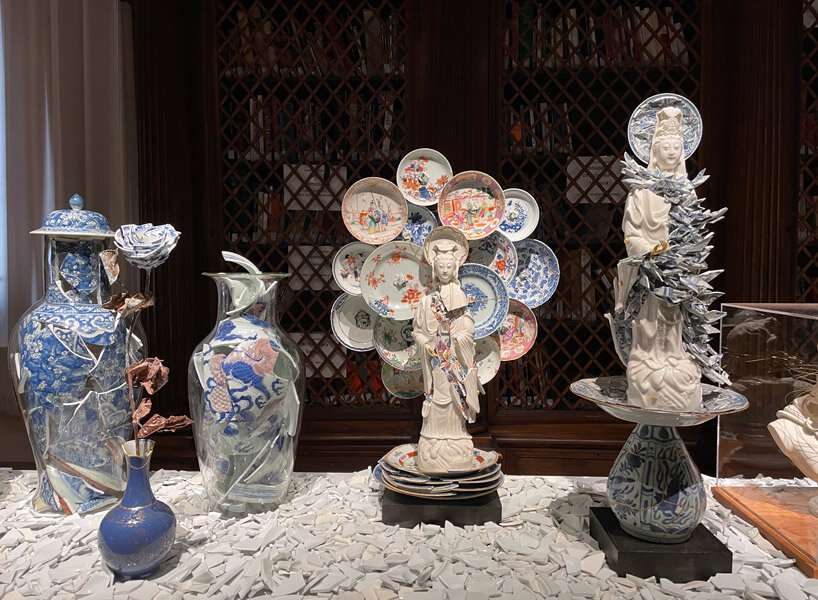
cover and banner by bouke de vries / all other images by designboom
De Vries at Homo Faber Event
De Vries graces the land of Homo Faber Event in Venice, a gathering of showcased works of contemporary craftsmanship. Running until May 1st, the Homo Faber Event honors Japan and its finest master artisans and designers in Venice, a celebration of dialogue between Japan and Europe through the products of design and art that highly render and speak of Japan’s culture and tradition.
The ceramist and artist adopts the Japanese technique of kintsugi to piece together broken ceramics in several of his sculptures for the event. Kintsugi – golden joinery – forms the practice of repairing ceramics with gold lacquer, incorporating the object’s ‘pain’ into its history. De Vries follows a similar concept, believing that even if something is broken, it may still be beautiful. He employs his refined conservatory talents to infuse new values into his compositions and further their tales.
He calls his style ‘the beauty of destruction,’ sourced from the creed that by reconstructing objects, he deconstructs them. Instead of hiding the evidence of this most dramatic episode in the life of a ceramic object, he emphasizes their new status and instills new virtues into what makes them up. As written on his website, ‘The contemplative works echo the 17th- and 18th-century still-life paintings of his Dutch heritage, especially the flower paintings of the Golden Age, a tradition in which his hometown of Utrecht was steeped – de Heem, van Alst, van Huysum inter alia – with their implied decay. By incorporating contemporary items, a new vocabulary of symbolism evolves.’
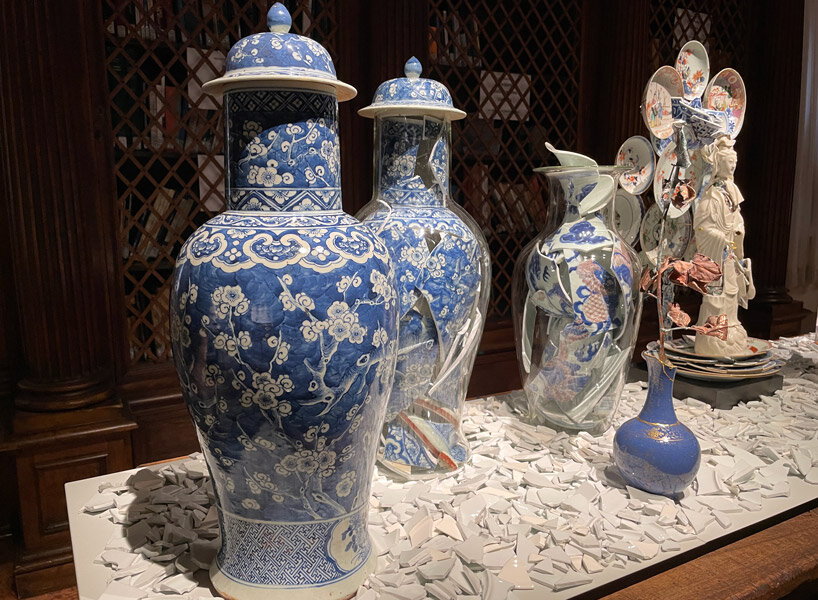
ceramicist bouke de vries constructs ‘the beauty of destruction’
Dead natures
These ‘dead natures’ – natures morts – imbue everyday objects found in homes – such as a plate, a milk jug, or a teapot – with a modern poignancy that harkens back to the Vanitas and Momento Mori paintings of history. De Vries also pays tribute to the revered figures of the past as he installs them at the core of his works surrounded by the ethos of his craftsmanship.
In ‘Guan Yin In A Sky of Saucers’, the sculpture of Guan Yin, a goddess of mercy and compassion, is surrounded by a cloud of 18th-century Chinese porcelain plates. Stacks of plates hover behind the goddess’ head whose cracked porcelain body communes with the scraps of kimono-inspired ceramics inside her body.
Dystopia in the midst of a science-fiction transition permeates ‘Teapot’, a sculpture created from assembled pieces of a broken 18th-century Chinese porcelain teapot, tea leaves, and mixed media. According to the event, this is the first teapot sculpture that Bouke de Vries created, a depiction of a teapot in the process of breaking, with all of its contents spilling out. As the hovering content spills out from the crevices, the visual gives this traumatic incident a poetic context.
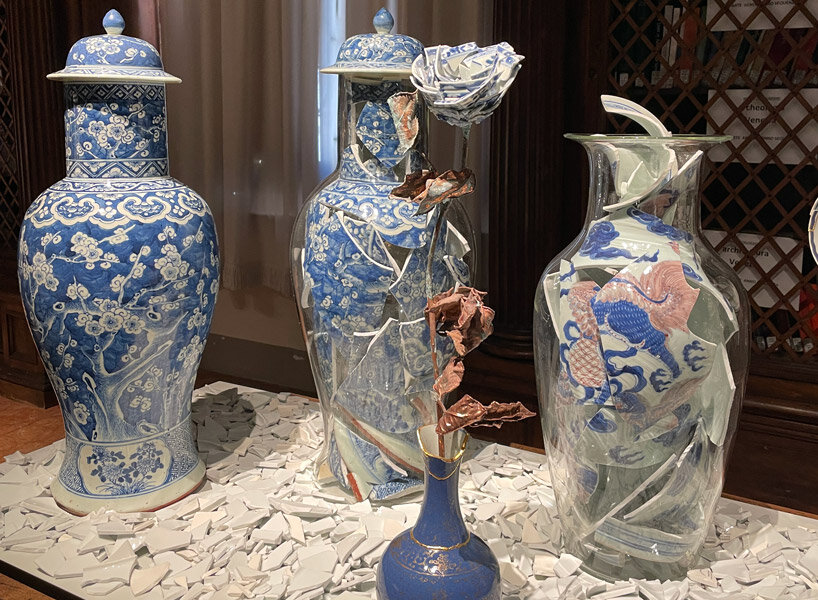
ceramicist bouke de vries at homo faber event
A new beginning
De Vries shares that when he restores an object ‘worth’ restoring, some clients prefer to conceal the damages to their prized possessions as much as possible. He calls it a denial of ‘the evidence of what was probably the most dramatic episode in the life of the piece, especially since modern methods mean restoration options are available.’ Yet perfection means flaw for the ceramist and artist, a lump of defects and glitches that constructs the definition of renewed, if not original, beauty.
When De Vries bought a bisque figure of a Dutch boy at the 26th Street Flea Market in New York, the piece got damaged. He kept its fragments and treasured them in his dwelling. Years later, he reassembled the porcelain pieces by hanging and gluing them onto a thin, transparent pole with branches. He broke the monotonous palette by dangling a small red heart positioned in the lungs of the broken Dutch boy. Titled ‘Portrait of the Artist I’, the sculpture remains the very first piece that Bouke de Vries created. The moment he pieced everything together, he knew it marked a new beginning.
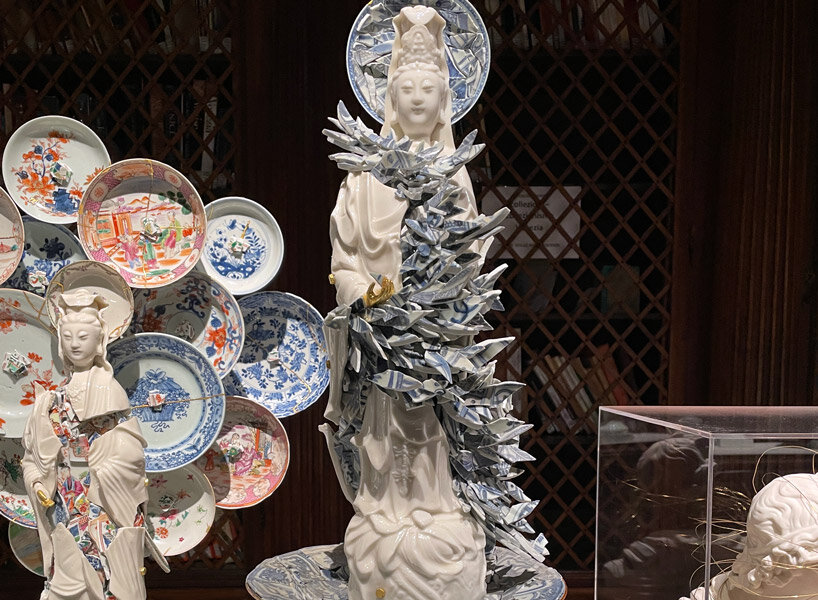
guan yin sculptures of bouke de vries

guan yin in a sky of saucers
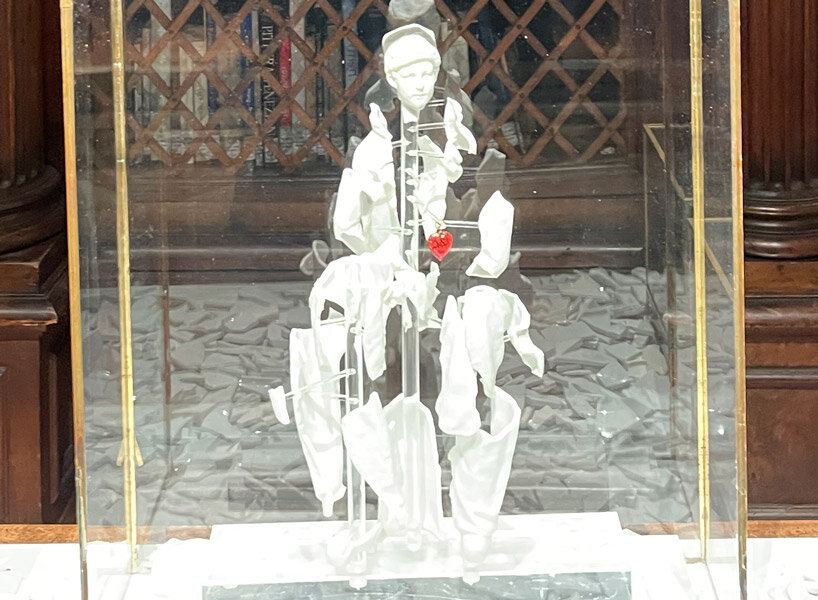
portrait of the artist I
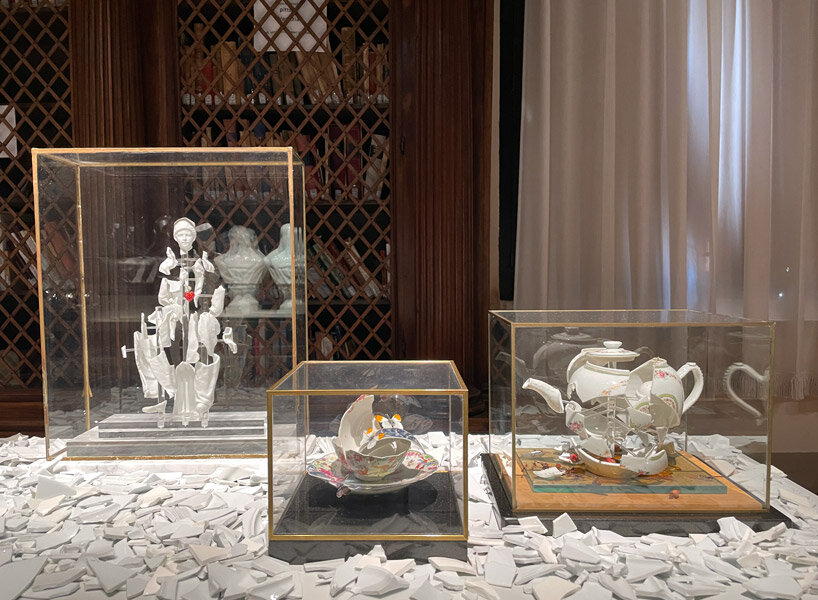
bouke de vries describes his style as ‘the beauty of destruction’
project info:
artist: Bouke de Vries
type: Ceramics, Mixed Media
event: Homo Faber Event
until: May 1st, 2022
matthew burgos | designboom
apr 14, 2022


